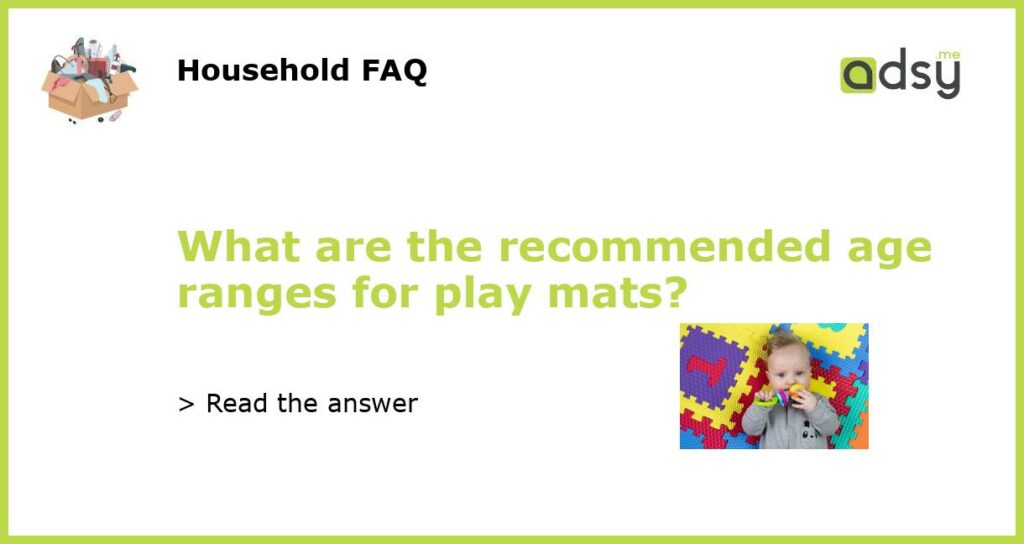Recommended Age Ranges for Play Mats
Play mats are a popular choice for parents looking to create a safe and comfortable play space for their infants and toddlers. These mats provide cushioning and protection for little ones as they explore and play. However, it’s important to consider the recommended age ranges for play mats to ensure that they are appropriate for your child’s developmental stage. Here are some guidelines to help you choose the right play mat for your little one.
Infants (0-6 months)
During the first few months of life, infants spend most of their time lying down. Play mats designed for this age group typically have a soft and plush surface that provides support for their delicate bodies. These mats often come with attached toys or features such as mirrors or crinkly textures to stimulate their senses. The size of the play mat should be large enough for infants to stretch out and move their limbs freely, but not so big that they feel overwhelmed.
Crawlers (6-12 months)
Once babies start to crawl, they need a play mat that offers more mobility and encourages their exploration. Look for play mats that have a non-slip surface to prevent accidents as your little one tries to move around. Mats with engaging patterns or colors can also capture their attention and encourage them to explore their surroundings. At this stage, it may be beneficial to choose a play mat that can be easily folded or rolled up for transportation and storage.
Toddlers (1-3 years)
As your child grows and becomes more mobile, their play mat needs to accommodate their increasing energy and curiosity. Look for mats that are durable and easy to clean, as toddlers tend to be more active and messy during playtime. It’s also a good idea to choose a play mat that is thicker and provides more cushioning, as toddlers are more likely to engage in rough play or fall down from standing positions. Some play mats designed for this age group also have built-in puzzles or activities that can help develop their cognitive and motor skills.
Preschoolers (3+ years)
Play mats are still useful for preschoolers, although their needs may be different from younger children. At this stage, play mats can be used as a designated area for activities such as reading, drawing, or building blocks. Look for play mats that have a larger surface area to accommodate multiple children or different activities. Mats with educational themes or designs can also provide additional learning opportunities for preschoolers.
Choosing the right play mat for your child involves considering their age and developmental stage. Infants need soft and supportive mats, while crawlers benefit from non-slip surfaces and engaging designs. Toddlers require thicker mats with extra cushioning, and preschoolers can use play mats as a designated area for various activities. By considering these recommended age ranges, you can ensure that your child’s play mat provides a safe and engaging environment for their development.






